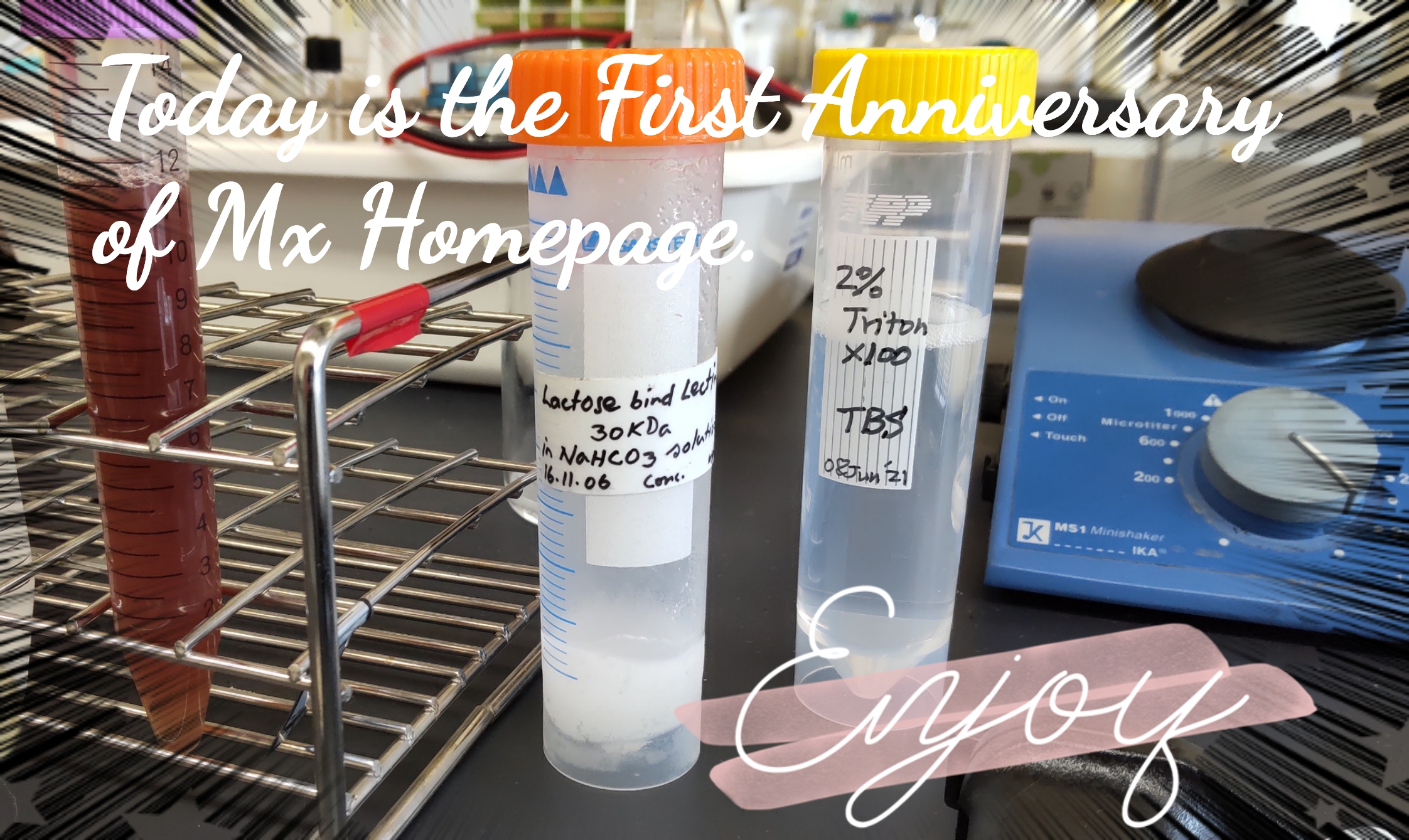Today is the 1st Anniversary of Mx homapage
Today is the 1st Anniversary of Mx homepage. The homepage was uploaded on July 19th, 2020. Thank you so much for your continuous support, and we look forward to your continued patronage moving forward.
Currently, Mx is transmitting information through this homepage focusing on mechanisms of SARS-CoV-2 infection and causes developing serious conditions, especially focusing on topics around glycan and lectin related matters.
The following picture is a scene trying to extract lectins from Capitulum mitella.
By the way, blog Admin has finished two times vaccinations recently.


